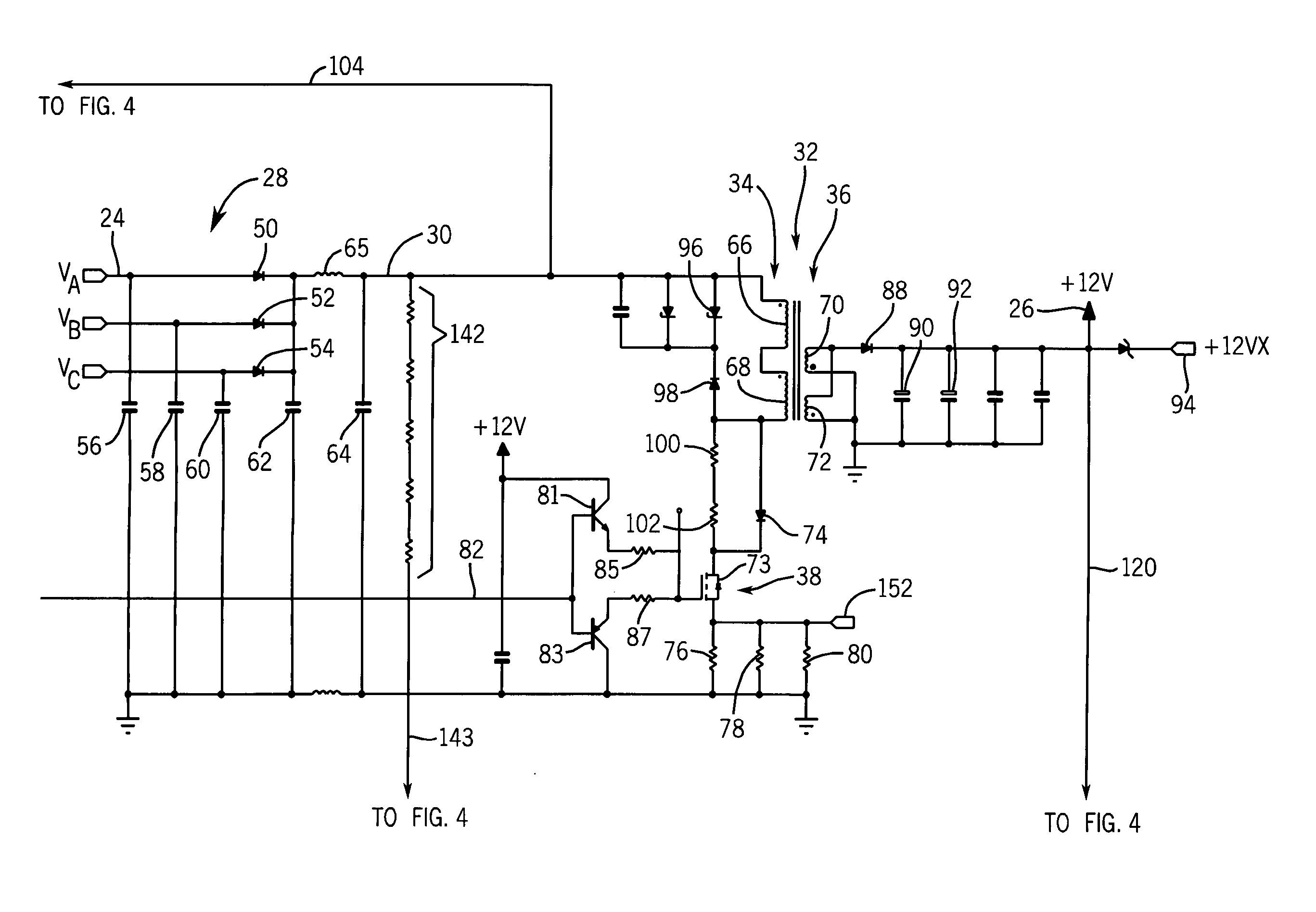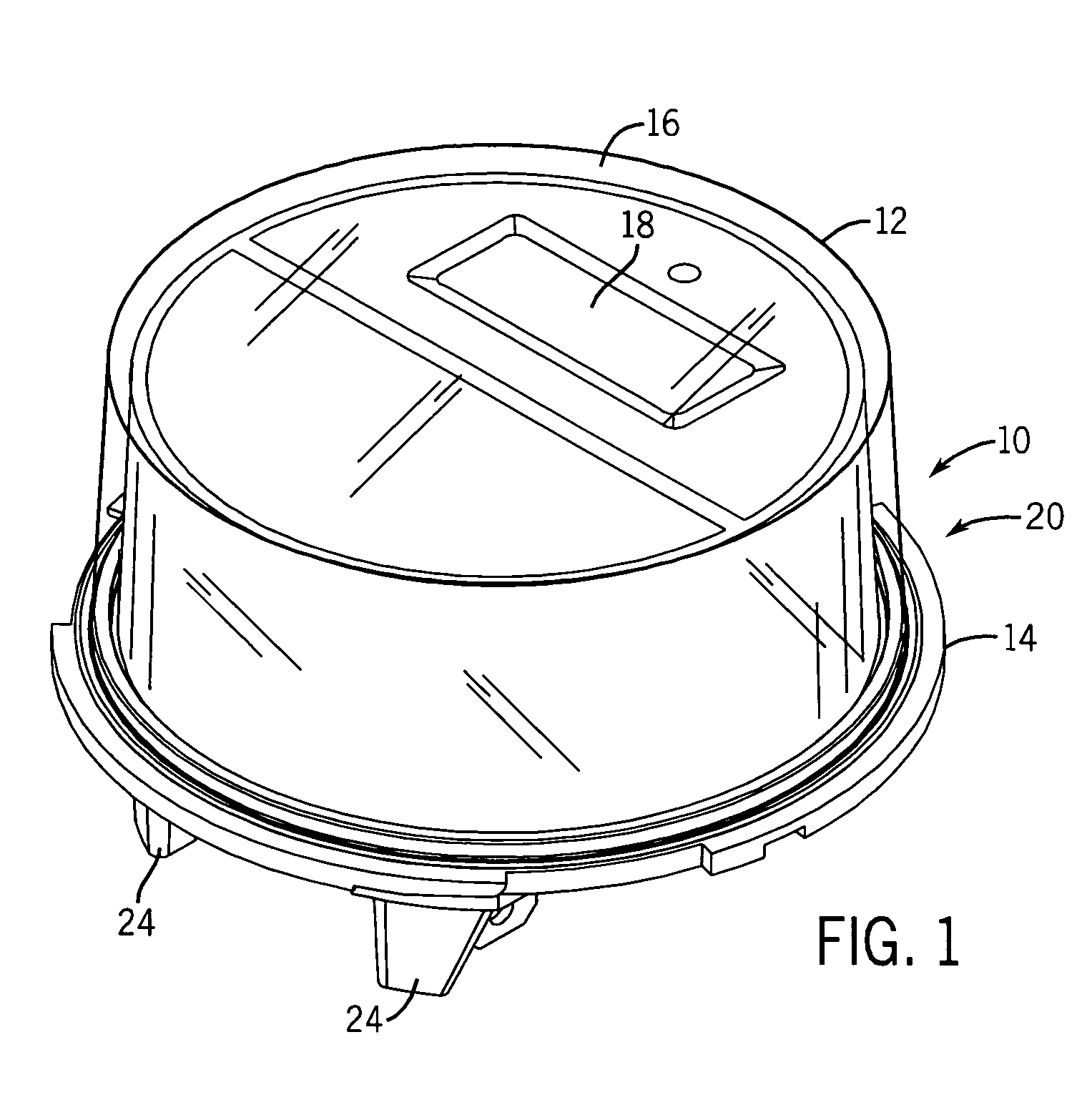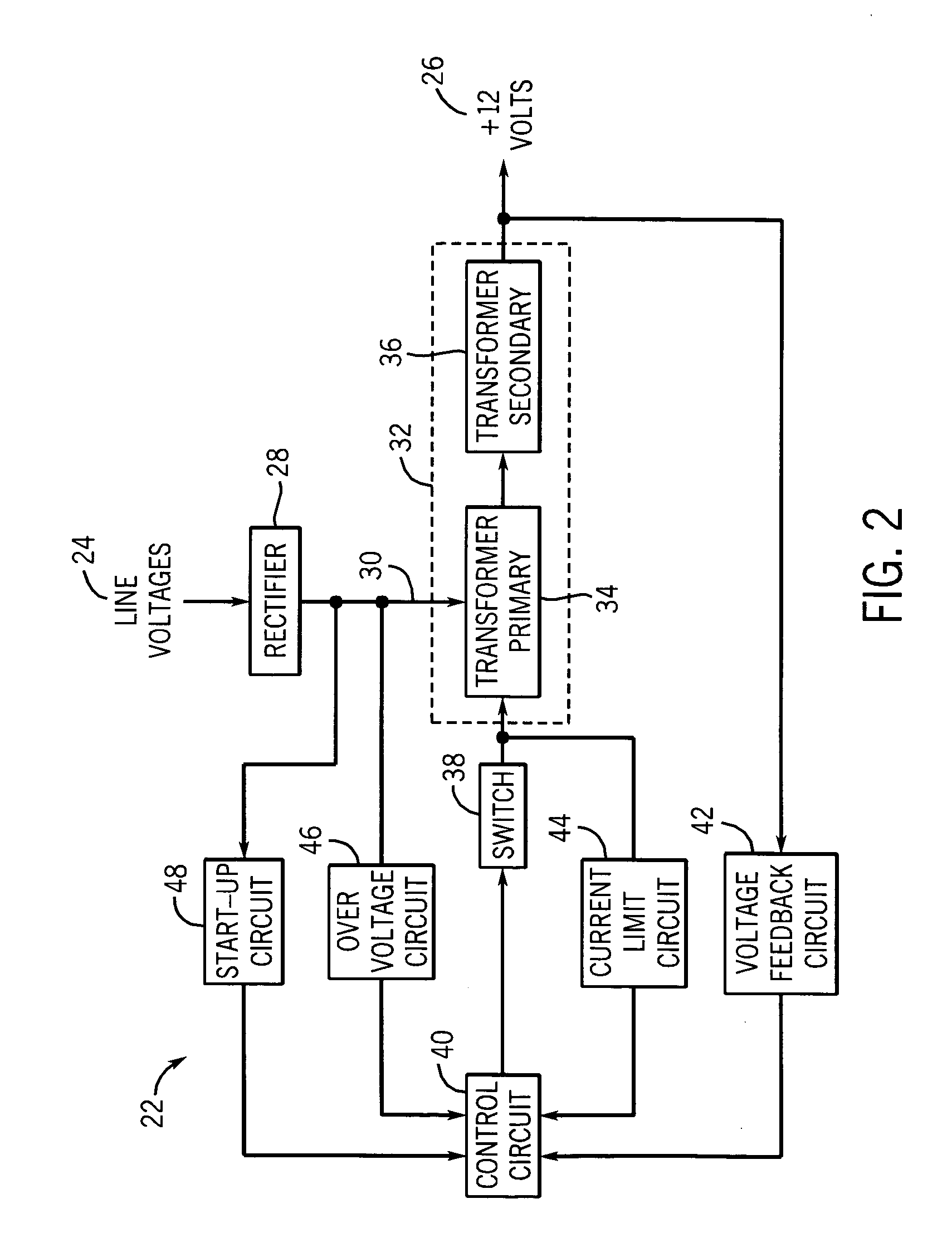Power supply for use in an electronic energy meter
a technology of electronic energy meters and power supplies, applied in the direction of power conversion systems, dc-dc conversion, instruments, etc., can solve the problems of drawbacks of current available power supplies, reduce the on-time of transformers, prevent further current flow through primary windings, and accurately maintain constant output voltages
- Summary
- Abstract
- Description
- Claims
- Application Information
AI Technical Summary
Benefits of technology
Problems solved by technology
Method used
Image
Examples
Embodiment Construction
[0018]FIG. 1 illustrates a three-phase electronic electricity meter 10 constructed in accordance with the present invention. The electricity meter 10 includes an enclosed meter housing comprised of a cover member 12 mounted to a base member 14. The cover member 12 includes a generally clear face surface 16 that allows a digital display 18 to be read from the exterior of the electricity meter 10. The cover member 12 and base member 14 are joined to each other in a conventional manner such that the base member 14 and the cover member 16 define a sealed, enclosed meter housing. The meter housing prevents moisture and other environmental contaminants from reaching the internal circuitry contained within the three-phase electronic electricity meter 10.
[0019] In the present invention, an operating and measurement circuit is contained within the meter housing that operates to measure the energy consumption and control the digital display 18. The specific details of the measurement circuit...
PUM
 Login to View More
Login to View More Abstract
Description
Claims
Application Information
 Login to View More
Login to View More - R&D
- Intellectual Property
- Life Sciences
- Materials
- Tech Scout
- Unparalleled Data Quality
- Higher Quality Content
- 60% Fewer Hallucinations
Browse by: Latest US Patents, China's latest patents, Technical Efficacy Thesaurus, Application Domain, Technology Topic, Popular Technical Reports.
© 2025 PatSnap. All rights reserved.Legal|Privacy policy|Modern Slavery Act Transparency Statement|Sitemap|About US| Contact US: help@patsnap.com



